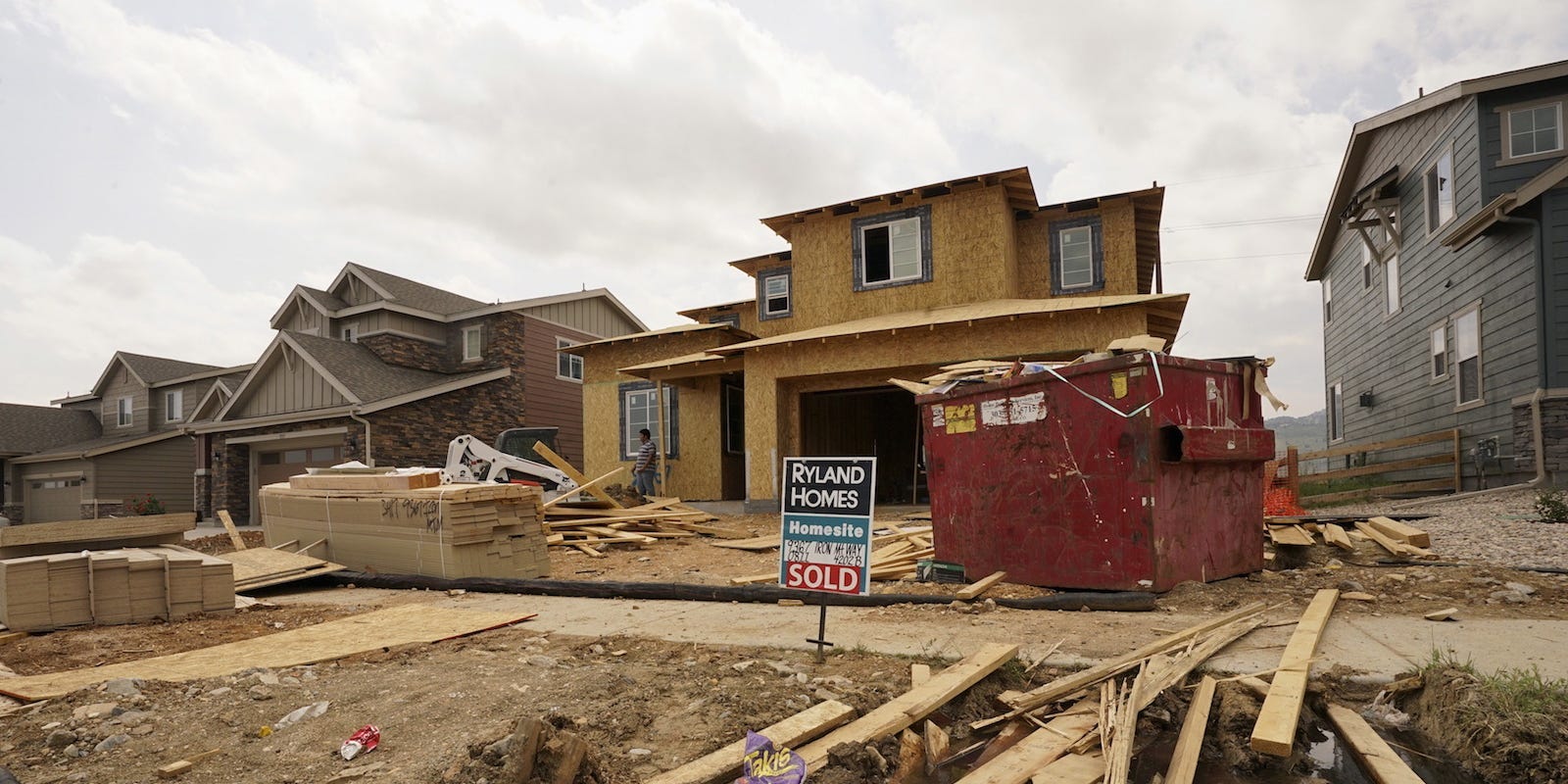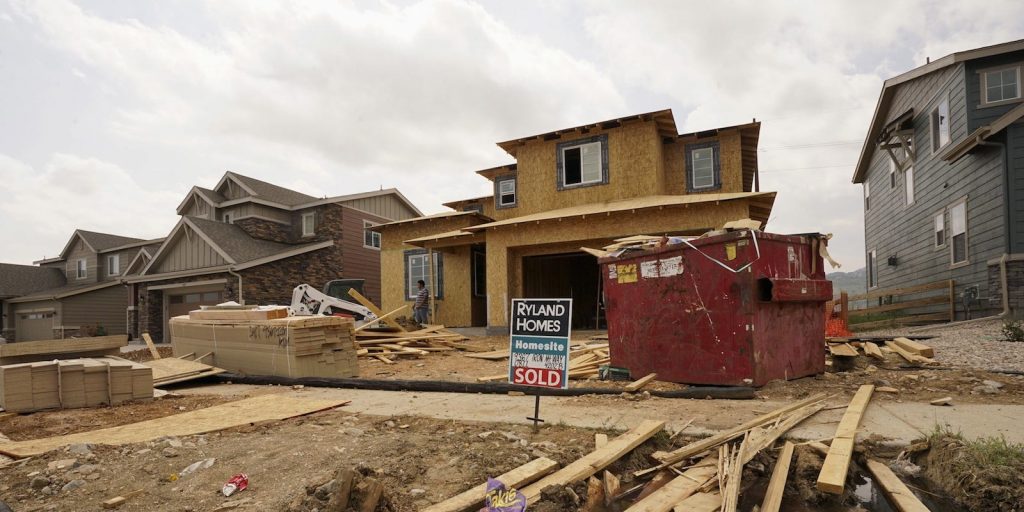
- The US home-price surge is cooling off, but not as fast as buyers would like, Fannie Mae said in a report.
- The firm expects year-over-year home inflation to only hit its pre-COVID average in early 2023, and for prices to keep soaring at a historic pace throughout next year.
- Price growth will plunge below its average in 2023, but the floor for home prices will be set permanently higher, Fannie Mae economists said.
If surging home prices put you off from buying a house in 2021, you'll have to wait another year for the market to cool down.
The third quarter of 2021 likely marked the peak for the housing market's price surge, economists at Fannie Mae said in its November housing forecast. The team sees year-over-year home inflation easing to 16.6% in the fourth quarter from the high of 18.6% in the quarter that ended September 30.
The cooldown has started, but it will take time for the market to normalize, the team added. Double-digit home-price inflation will last until the middle of 2022, according to the forecast. It won't be until 2023 when home inflation returns to the 5% pace seen before the pandemic. The report, published on November 18, is the first to project housing market activity through the end of 2023.
Fannie Mae's outlook paints a gloomy picture for prospective homebuyers. The past year has been challenging enough for the group as historically low mortgage rates and the shift to remote work spurred a wave of pandemic-era moves. Home inventory plunged to record lows as sales skyrocketed, and those still looking to buy were forced into frenzied bidding wars over what few homes were still available. Monthly price growth has eased slightly, but the year-over-year pace still sits at the highest level in more than four decades.
The November report revises home construction lower while lifting expectations for home sales. Put simply, Americans are still snapping up homes at breakneck speed — but builders haven't been able to keep up. That combination of factors is set to leave price growth at stifling highs throughout 2022.
Both the labor shortage and supply crisis are keeping construction from bouncing back, the economists said. Bottlenecks made key materials like lumber more expensive through much of the year and ate into profit margins for builders. A shortage of available workers has also crimped housing starts as firms have struggled to rehire. With both trends putting pressure on builders, buyers will be stuck bidding on a small supply of homes for the next several months.
"If these supply constraints can be resolved faster than we currently anticipate, there is upside risk to the pace of housing starts and new home sales," the team said.
But Fannie Mae doesn't see the 2022 market being all doom and gloom. The firm expects the average 30-year mortgage rate to only climb slightly to 3.5% by the end of 2023. By comparison, the average rate sat at 3.7% before the pandemic hit and neared 5% in late 2018. The low borrowing cost offers buyers some relief as prices keep charging higher.
And while prices aren't forecasted to decline, price growth through much of 2023 will be slower than average, according to Fannie Mae. Year-over-year home inflation will drop to 4.4% in the second quarter of 2023 and end the year at 2.9%. That's roughly half the pre-pandemic norm and much-needed relief for buyers willing to wait.
Still, the pandemic is set to permanently raise the floor for US home prices. Fannie Mae forecasts that the median price of a previously owned home will surpass $400,000 by the middle of 2023. The median new home price will end 2023 at a record-high $464,000, the firm added, or roughly $100,000 higher than it stood at the start of 2021.
If Fannie Mae's experts are correct, homebuyers are in for a mixed experience. It will be easier to find a home in the next two years. Being able to afford it will be a whole different story.
